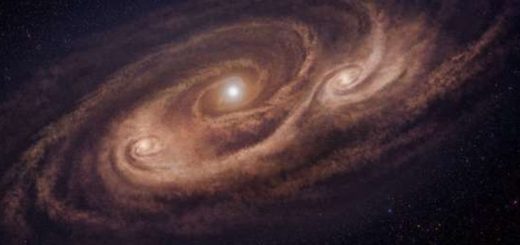Despite Hostile Environment Pulsar Could Host Habitable Planets – New Study

Theoretically, it is possible that pulsar could host habitable planets, researchers say.
For the first time, astronomers have tried to calculate the ‘habitable’ zones near neutron stars – the range of orbits around a star where a planetary surface could possibly support water in a liquid form.
The calculations show that the habitable zone around a neutron star can be as large as the distance from our Earth to our Sun.
However, such planets would require an enormous atmosphere to convert the deadly X-rays and high energy particles emitted by the pulsar into heat.
This atmosphere would also need to be at least a million times as thick as Earth’s. Only an extremely thick atmosphere, capable of converting the pulsar’s radiation into thermal energy, would be able to protect the planet from high-energy particles.
Additionally, the planet would have to be a super-Earth, with a mass 1 to 10 times greater than Earth’s.
“According to our calculations, the temperature of the planets might be suitable for the presence of liquid water on their surface.
“Though we don’t know yet if the two super-Earths have the right, extremely dense atmosphere,” Alessandro Patruno, a scientist working at the Netherlands Research School for Astronomy and the United Kingdom, said.
Pulsars are known for their extreme conditions. Each is a fast-spinning neutron star – the collapsed core of a massive star that has gone supernova at the end of its life. Only 10 to 30 km across, a pulsar has enormous magnetic fields, accretes matter, and regularly give out large bursts of X-rays and highly energetic particles.
Despite this very hostile environment, neutron stars host exoplanets. The astronomers studied the pulsar PSR B1257+12 located about 2300 light-years away in the constellation Virgo.
They found three planets around the star using the Chandra Space Telescope. Of the three planets in orbit around the pulsar, two are super-Earths with a mass of four to five times our Earth, and orbit close enough to the pulsar to warm up.
“The temperature of the planets might be suitable for the presence of liquid water on their surface. Though, we don’t know yet if the two super-Earths have the right, extremely dense atmosphere,” Patruno said.
So far, 3000 pulsars have been studied and only 5 pulsar planets have been found.



 Creators of mankind
Creators of mankind Description of “Tall white aliens”
Description of “Tall white aliens” Where they came from?
Where they came from? About hostile civilizations
About hostile civilizations The war for the Earth
The war for the Earth “Tall white aliens” about eternal life
“Tall white aliens” about eternal life Video: “Nordic aliens”
Video: “Nordic aliens” Aliens
Aliens Alien encounters
Alien encounters The aliens base
The aliens base UFO
UFO Technology UFO
Technology UFO Underground civilization
Underground civilization Ancient alien artifacts
Ancient alien artifacts Military and UFO
Military and UFO Mysteries and hypotheses
Mysteries and hypotheses Scientific facts
Scientific facts


















